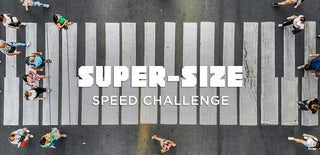Introduction: 3D-Printed Super-Sized Trading Cards
This project is a fun way to turn your trading cards into a sort of personal collectible. There's more than one method to go about this, but these instructions are meant to simplify the process.
This method can work with almost any brand of trading card (Pokemon, Magic, etc.) but for this example, I've chosen to use the Blue-Eyes White Dragon card from Yu-Gi-Oh, as I find it to have a relatively simple art to recreate while still looking fairly impressive. In this method, I also use the browser version of SketchUp, as it is the least complicated for the average person to learn in terms of 3D modeling.
NOTE: Decide what layer height you will be printing this in before starting, as it will affect how much you choose to extrude certain parts of the card.
Supplies
- A computer with a CAD program capable of exporting a 3D file
- A 3D Printer w/ filament
- An image of your desired trading card
Step 1: Beginning Your Model
- Download your desired image and import as a 2D image into your CAD program.
- Try to choose a version of your card with minimal small text/features as they can get lost when the model renders for printing
Step 2: Scale to "Actual-Size"
- Once the image is imported, use the scale function to change the cards dimensions in the model-space.
- Scale it so that the dimensions of the image in the CAD measurement matches the standard "real-life" card dimensions.
- You can use the dimension/measuring tool t check the length/width of the image.
Step 3: Copy and Enlarge
- Copy and paste the image, and then scale the pasted image to between 2x-4x the original size.
- Check that your printer can fit the size you want.
- It is important to scale the image up before sketching/tracing so you can make more defined lines/curves.
- Copy the enlarged imaged and paste.
- This pasted image will be the one you will trace over. The first enlarged image will be used as another reference.
Step 4: Sketch and Extrude the Base
- Draw an even rectangle from corner-to-corner of the image.
- Extrude this base rectangle so that it will take up about 4-5 layers when printing.
- Extrude the borders out a little higher than the base.
- Model any description/features not within the card art borders.
- Avoid focusing on smaller text/features.
- SketchUp has a feature to convert text into pre-extruded shapes which is helpful for adding card stats.
- (SketchUp-specific) Highlight the base and right-click to choose the "Make Component" option.
- This lets you organize different parts of the model into groups to minimize interference when modeling different parts of the card.
Step 5: Determine Layers and Begin Sketching
- Examine the card art and determine how each part is layered from background to foreground.
- Begin labeling each part of the art with numbers, increasing sequentially from where that part is from background to foreground.
- Do this on the first enlarged image
- On the second enlarged image, begin tracing each feature, separating each part so that parts with different labels are separate "pieces' of the sketch.
- In SketchUp, make sure that the shapes are all closed so that they can be individually extruded.
- Different shapes can be on the same layer, but ideally there are no two adjacent pieces on the same layer.
Step 6: Begin Extruding Each Layer
- To determine the extruded height of each piece, use the following equation:
- Height = (printing layer thickness) x (layer number)
- As an example, if you've chosen to print the card in layers of 0.3mm:
- (0.3mm) x (1) = Extruded height of 0.3mm
- (0.3mm) x (5) = Extruded height of 1.5mm
- As an example, if you've chosen to print the card in layers of 0.3mm:
- Height = (printing layer thickness) x (layer number)
Step 7: Print!
- Print your model and ensure there are no malfunctions.
- If you are more artistically inclined than I am, you can use a primer on the finished print and carefully paint each piece to colorize the card.
- Display!

Participated in the
Super-Size Speed Challenge








